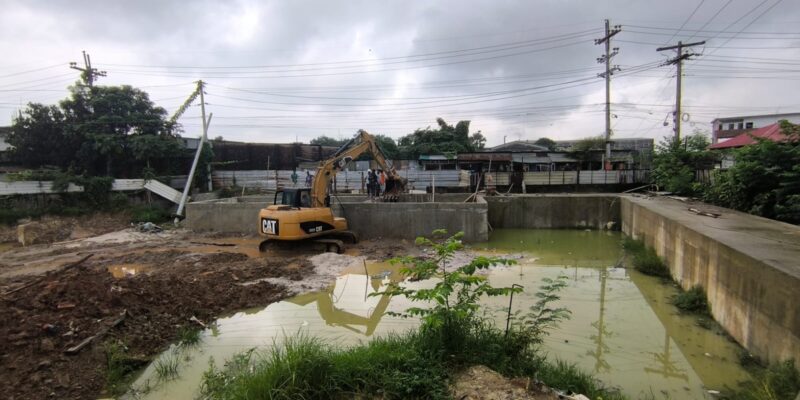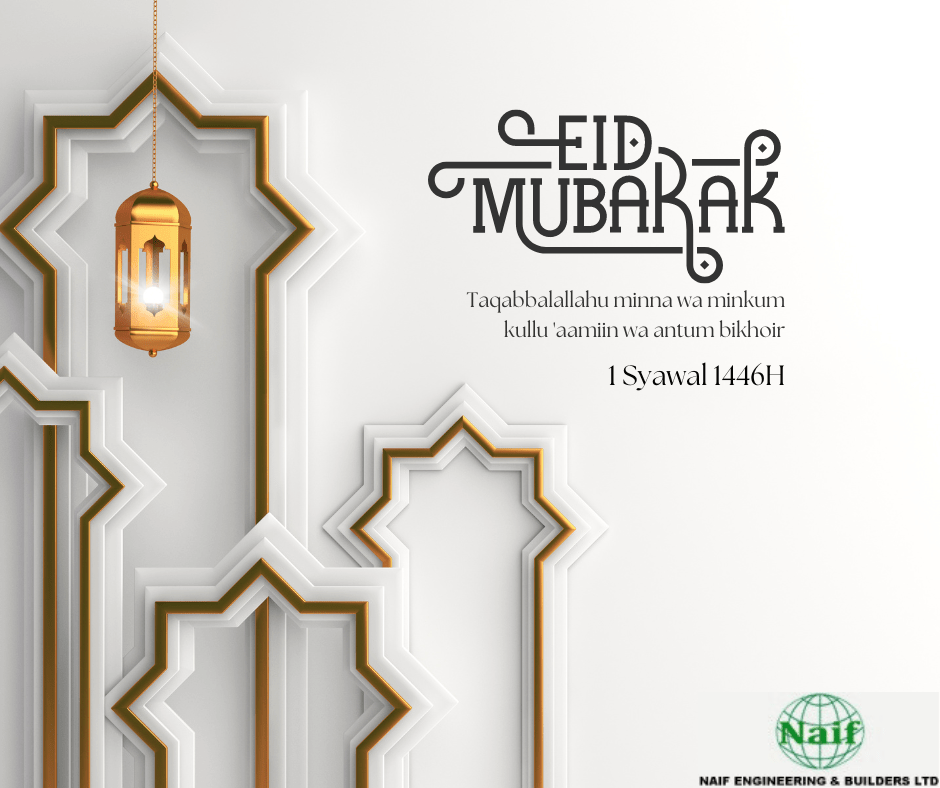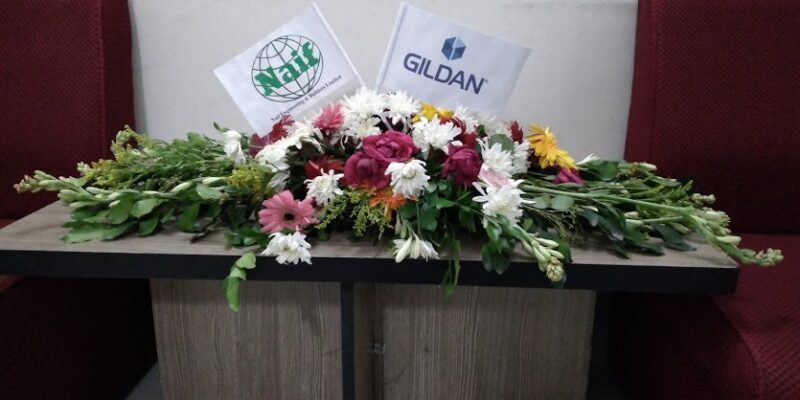Project Summary: Naif Engineering & Builders Limited (NEABL) was engaged by How Are You (HAY) Textile Industries Limited — a subsidiary of Crystal Group — to diagnose internal flooding and deliver a long-life solution in Gorgoria Masterbari, Mawna Highway, Gazipur, Bangladesh. The scope covers a new overflow tank and an integrated reinforced concrete (RC) box culvert network designed and built under a live industrial environment.
Context & Objectives
Gazipur’s industrial zone experiences intense monsoon rainfall and short runoff concentration times across roofs and paved yards. For textile campuses, even shallow flooding can disrupt operations, damage stock, and threaten electrical systems. To address recurring inundation, How Are You (HAY) Textile Industries Limited — a Crystal Group subsidiary — appointed Naif Engineering & Builders Limited under a design-and-build arrangement to deliver a resilient anti-flood solution with minimal production downtime.
NEABL’s brief combined hydrology, hydraulics, geotechnics, and construction planning. The solution centers on an RC box culvert network discharging to a new overflow tank, sized for peak attenuation and safe stormwater conveyance within the constrained factory boundary at Gorgoria Masterbari, Mawna Highway, Gazipur.
Design Strategy
Hydrology
Design storms and catchment delineation captured roofs, yards, and pervious areas. Runoff coefficients and time of concentration informed culvert sizing, with allowances for sediment load and debris. Sensitivity checks considered future impervious growth and climate variability.
Hydraulics
Culvert sections and inverts were optimized for self-cleansing velocities and controlled outlet energy. Transition losses were minimized by smooth geometry and appropriate radii. The overflow tank provides detention and energy dissipation during surges.
Geotechnics & Durability
Subgrade conditions in Gazipur include mixed fills and natural silty clays. Foundations received blinding concrete; cover and joint detailing were designed for sulfate exposure and cyclic wetting. Water-stops, sealants, and controlled cracking provisions support serviceability.
Constructability & Phasing
To keep operations live, works were phased. Temporary shoring, safe slopes, and dewatering were integrated into method statements. Short panel lengths allowed rapid reinforcement, pouring, and early re-opening of corridors.
Phase 1: Overflow Tank & 62 m RC Box Culvert (Completed)
Phase 1 established the hydraulic backbone and immediate flood relief. By tying the new overflow tank to a 62 m RC trunk at controlled inverts, the system now buffers short-duration surges, stabilizes internal water levels, and provides safe conveyance to the outfall. Existing yard drains and roof downpipes were intercepted via chambers to reduce ponding around production buildings. Dewatering, joint water-stops, and disciplined curing minimized early-age defects; slump/cube tests and line-and-level checks verified compliance before opening to traffic. Lessons from Phase 1—panel length selection, access management in narrow corridors, and night pours during low-traffic windows—directly informed the methodology for Phase 2.
Excavation & access: Confined-area excavation proceeded with machine spotters and exclusion zones to protect personnel and perimeter structures.
Temporary works: Stabilization and strutting protected vertical cuts. Founding levels were trimmed and cleaned ahead of blinding.
Reinforcement fabrication: Pre-tied cages for base, walls, and roof accelerated placement; bar marks, laps, and bends followed BBS and IFC drawings.
Base slab: Base reinforcement was set to specified cover with chairs/spacers; embeds and dowels installed prior to concrete.
Concrete placement: Controlled pours with systematic vibration achieved consolidation around congested steel; pour breaks aligned with geometry.
Curing & protection: Water spray and wet coverings mitigated early-age cracking; areas remained closed until target strength.
Superstructure & chambers: Joint water-stops and sealants were installed at construction and movement joints according to detail.
Inspection & finishing: Internal surfaces were checked for honeycombing and alignment; minor defects rectified under NEABL quality procedures.
Commissioning readiness: The Phase 1 trunk and overflow tank provided immediate attenuation and conveyance capacity.
With Phase 1 complete, the facility could maintain operations through heavy rainfall while Phase 2 advanced.
Phase 2: 620 m RC Box Culvert (Ongoing)
Phase 2 extends the network by approximately 620 m, integrating lateral inlets and negotiating tight curves along boundary walls. Works are sequenced to maintain access, protect services, and manage groundwater.
Mobilization & earthworks: Short-reach excavation with interim bunds and sumps controls water ingress; material flow keeps corridors clear.
Constrained corridors: Lightweight shutters, modular struts, and staged wall lifts reduce pressure on nearby foundations.
QA/QC checkpoints: Rebar spacing, laps, cover, and embeds verified before each pour; survey control sets inverts and falls.
Utilities interface: Sleeves and protection details coordinate crossings; temporary bridges maintain movement across the deck.
Complex geometry: Segmented shutters and staggered bars maintain cover through curves, preserving hydraulic capacity.
Hydraulic continuity: Radius sections manage secondary flows and minimize headloss while reinforcement addresses bending and torsion.
Base casting: Bases cast on blinding with key-in to walls; finish supports interim drainage and safe access.
Curing management: Wet hessian and periodic water sprays limit early-age cracking risk and ensure durability.
Progressive handover: As segments reach strength, corridors reopen to plant operations—minimizing disruption in monsoon windows.
Once finished, the 620 m trunk will balance storage and conveyance across the estate, integrating with the Phase 1 overflow tank for peak-stage control and safe discharge.
Construction Methodology
Excavation & Dewatering: Controlled reaches, sump pumps, and temporary drains maintain a dry working platform. During high groundwater or rainfall, panel lengths are reduced to accelerate reinforcement and pour cycles.
Formwork & Reinforcement: Modular shutters and reusable forms improve pace and finish. Pre-fabricated reinforcement is lifted with taglines to avoid clashes. Non-absorbent spacers secure cover before every pour.
Concrete Works: Slump compliance, continuous placement, and internal vibration produce dense, durable sections. Construction joints receive surface prep and water-stops per detail.
Survey & Controls: A closed-loop survey network governs line, level, and fall. As-built records capture invert levels, joint locations, and embedments for O&M use.
Quality, Safety & Compliance
NEABL enforces a prevention-first safety culture: mandatory PPE, controlled access, signage, and planned lifting with exclusion zones. Daily briefings cover task risks, weather, and interfaces with factory operations.
Inspection and Test Plans (ITPs) govern materials approval, rebar checks, concrete sampling (slump & cubes), and post-pour inspections. Non-conformances are tracked to closure. Works follow national codes and good international practice for stormwater infrastructure.
Operational Benefits & Impact
- Risk reduction: Detention and conveyance capacity reduce internal flood levels during peak storms.
- Business continuity: Phased delivery and progressive handover kept How Are You (HAY) Textile Industries Limited operational.
- Maintainability: Accessible chambers and straight-through reaches simplify inspection and cleaning.
FAQs
What design storm did NEABL consider?
Design storms were selected to suit local standards and client risk appetite, with sensitivity checks for intensification trends and future impervious growth.
How were utilities protected?
Crossings used sleeves, offsets, and dedicated supports. Work windows were coordinated with plant operations to avoid service disruptions.
How will the system be maintained?
Routine inspection of chambers, periodic sediment removal, and joint condition checks preserve hydraulic capacity and structural durability.
About Naif Engineering & Builders Limited
Naif Engineering & Builders Limited (NEABL) is a Bangladesh-based contractor delivering complex industrial, infrastructure, and building projects. Our design-and-build capability enables rapid problem solving from first principles through commissioning. This Gazipur anti-flood project for How Are You Textile Industries Limited— a Crystal Group subsidiary — demonstrates NEABL’s focus on safety, quality, and reliable outcomes in space-constrained environments.
Want to discuss flood protection or industrial drainage? Get in touch with Naif Engineering & Builders Limited (NEABL) to evaluate risks and develop a tailored design-and-build solution.















নতুন বছর নতুন উদ্যমের সঙ্গে শুরু হোক, পুরনো হতাশা ভুলে গিয়ে নতুন করে শুরু হোক যাত্রা। শুভ নববর্ষ।
Let the new year begin with new enthusiasm, forget the old disappointments and start the journey anew. Bangla Happy New Year 2024 (Poila Baishakh 1431).
#BanglaNewYear #NaifEngineeringBuilders #PohelaBoishakh #Celebration #SpreadLove #NaifGroup